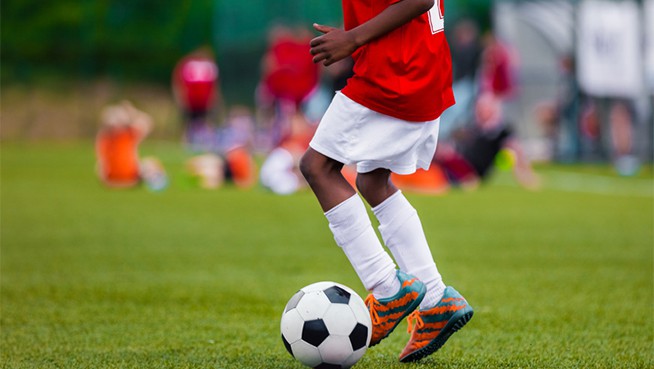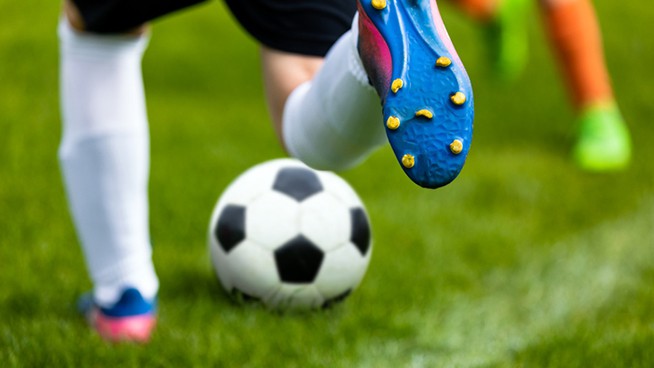17 Things Basketball Players and Coaches Should Pay Attention To When Watching an NBA Game
![]()

By Joe Abunassar, founder of Impact Basketball and trainer of more than 200 NBA professionals, men’s and women’s national teams, McDonalds and NCAA All-Americans, foreign professionals, as well as numerous talented youth players from all over the world.
At Impact Basketball, one of the most valuable things we think young players can do to improve their game is to learn how to watch an NBA game and notice things that can help their own skill development. I constantly ask young players who insist on over-dribbling or who have poor footwork, or who don’t get back on defense, “have you ever seen anyone in the NBA do it that way?” And when they answer “no,” I simply ask them, “Then why would you?”
Although many people claim that NBA guys are “just talented,” I can tell you that after working with the best of the best for over 20 years, that is not the case. The pros pay attention to details that many young players ignore. They have consistent footwork and balance at all times, and they’re very efficient in what they do. Even for such amazing athletes, many of these things don’t “come naturally.” They require hard work and focus, and the best guys in the NBA dedicate themselves to perfecting the details and playing smart, efficient basketball.
We tell our young guys to watch NBA games and pay attention to these details. Not the dunks and superhuman athleticism of some of the league’s superstars, but the little things in the game that can make a real difference for any player. Coaches can also take note of these details, because they can help themselves manage the game better and get the most out of their players.
Below is a list of things we think people should notice in an NBA game. They are things we train in our gyms every day and things we talk to our players about, working to help them understand and execute them. Player development means a lot more than doing drills. It also includes forming a deep understanding of what good basketball is. In our youth game today, this concept is often lost, and in the hundreds of youth games I watch each year, I am always amazed at the lack of good basketball.
Check these things out in the next NBA game you watch, and you will be on your way to a better understanding of what “good basketball” really means.
- Footwork. Notice how the players get open, pivot upon catching the ball and set up for a shot.
- Court positioning. Watch how they get into space away from the ball, where they run during a break, their movements in response to defensive scheme and how they relocate based on offensive flow. Analyze how they better position themselves on the court.
- How teams defend common plays. See and learn how to improve your defense on ball screens, pin downs, cross screens and out-of-bounds plays based on previous scouting and personnel on the court.
- Late-clock strategy. Notice how teams offensively and defensively deal with shot clock and game clock situations by fouling, 2-for-1s, timeouts and substitutions.
- How players finish at the rim. Watch how elite players finish with floaters, off-hand, Euro-step and other moves, and work to integrate them in your game.
- Quickness of decisions on offense. The best players make split-second decisions when passing, shooting or driving to the rim.
- Creativity of coaching. Pay attention to how coaches create mismatches through various offensive sets.
- Reserve players preparing to play on the bench. Reserve players don’t go onto the court cold. They prepare their bodies as best as they can so they can immediately give their full effort and make an impact.
- The effect of fatigue levels of players playing extended minutes. Notice how his performance dips when a guy appears to be fatigued, while the conditioned players excel late in the game.
- Efficiency in movement and energy usage of a veteran player versus a rookie. Veterans know how to play at an elite level while preserving energy by limiting wasted movement on the court.
- The specific role of each player coming off the bench into the game. Every player on a team has a role to play, and it’s valuable to see how each player fits in on his or her team.
- Offensive tactics. Learn how to attack a weak defender with screens, posts and isolations.
- Team interaction. Notice how teammates, coaches and referees interact and how it affects their performance.
- The way shooters set up and use off-the-ball screens. Use this technique to create more shooting opportunities.
- Defensive screen techniques. Notice how defenders react to and get around screens.
- The amount of passing vs. dribbling in a possession. Teams that move that ball well and score more easy points tend to pass more than dribble.
- The amount of times the ball switches side of the floor on offense. Moving the ball to different sides forces the defense to adjust and creates space for offensive attacks.
RECOMMENDED FOR YOU
MOST POPULAR
17 Things Basketball Players and Coaches Should Pay Attention To When Watching an NBA Game
![]()

By Joe Abunassar, founder of Impact Basketball and trainer of more than 200 NBA professionals, men’s and women’s national teams, McDonalds and NCAA All-Americans, foreign professionals, as well as numerous talented youth players from all over the world.
At Impact Basketball, one of the most valuable things we think young players can do to improve their game is to learn how to watch an NBA game and notice things that can help their own skill development. I constantly ask young players who insist on over-dribbling or who have poor footwork, or who don’t get back on defense, “have you ever seen anyone in the NBA do it that way?” And when they answer “no,” I simply ask them, “Then why would you?”
Although many people claim that NBA guys are “just talented,” I can tell you that after working with the best of the best for over 20 years, that is not the case. The pros pay attention to details that many young players ignore. They have consistent footwork and balance at all times, and they’re very efficient in what they do. Even for such amazing athletes, many of these things don’t “come naturally.” They require hard work and focus, and the best guys in the NBA dedicate themselves to perfecting the details and playing smart, efficient basketball.
We tell our young guys to watch NBA games and pay attention to these details. Not the dunks and superhuman athleticism of some of the league’s superstars, but the little things in the game that can make a real difference for any player. Coaches can also take note of these details, because they can help themselves manage the game better and get the most out of their players.
Below is a list of things we think people should notice in an NBA game. They are things we train in our gyms every day and things we talk to our players about, working to help them understand and execute them. Player development means a lot more than doing drills. It also includes forming a deep understanding of what good basketball is. In our youth game today, this concept is often lost, and in the hundreds of youth games I watch each year, I am always amazed at the lack of good basketball.
Check these things out in the next NBA game you watch, and you will be on your way to a better understanding of what “good basketball” really means.
- Footwork. Notice how the players get open, pivot upon catching the ball and set up for a shot.
- Court positioning. Watch how they get into space away from the ball, where they run during a break, their movements in response to defensive scheme and how they relocate based on offensive flow. Analyze how they better position themselves on the court.
- How teams defend common plays. See and learn how to improve your defense on ball screens, pin downs, cross screens and out-of-bounds plays based on previous scouting and personnel on the court.
- Late-clock strategy. Notice how teams offensively and defensively deal with shot clock and game clock situations by fouling, 2-for-1s, timeouts and substitutions.
- How players finish at the rim. Watch how elite players finish with floaters, off-hand, Euro-step and other moves, and work to integrate them in your game.
- Quickness of decisions on offense. The best players make split-second decisions when passing, shooting or driving to the rim.
- Creativity of coaching. Pay attention to how coaches create mismatches through various offensive sets.
- Reserve players preparing to play on the bench. Reserve players don’t go onto the court cold. They prepare their bodies as best as they can so they can immediately give their full effort and make an impact.
- The effect of fatigue levels of players playing extended minutes. Notice how his performance dips when a guy appears to be fatigued, while the conditioned players excel late in the game.
- Efficiency in movement and energy usage of a veteran player versus a rookie. Veterans know how to play at an elite level while preserving energy by limiting wasted movement on the court.
- The specific role of each player coming off the bench into the game. Every player on a team has a role to play, and it’s valuable to see how each player fits in on his or her team.
- Offensive tactics. Learn how to attack a weak defender with screens, posts and isolations.
- Team interaction. Notice how teammates, coaches and referees interact and how it affects their performance.
- The way shooters set up and use off-the-ball screens. Use this technique to create more shooting opportunities.
- Defensive screen techniques. Notice how defenders react to and get around screens.
- The amount of passing vs. dribbling in a possession. Teams that move that ball well and score more easy points tend to pass more than dribble.
- The amount of times the ball switches side of the floor on offense. Moving the ball to different sides forces the defense to adjust and creates space for offensive attacks.












